Exploring Apple's Buyback Strategy with Hyperliquid and Pump.fun
Written by: Prathik Desai
Translated by: Deep Tide TechFlow
Seven years ago, Apple completed what can be considered its greatest financial maneuver. In April 2017, Apple invested $5 billion to build its 360-acre Apple Park headquarters in Cupertino, California, known as the "spaceship." A year later, in May 2018, Apple announced a stock buyback program worth up to $100 billion. This amount was 20 times the investment in its headquarters, sending a message globally: Apple's other "product"—its stock—is as important as the iPhone, and perhaps even more so.
This was the largest buyback program announced by Apple at the time and part of a decade-long stock buyback frenzy, during which Apple spent over $725 billion repurchasing its own shares. Six years later, in May 2024, Apple set another record by announcing a buyback program worth $110 billion. This move not only showcased Apple's scarcity in device manufacturing but also reflected its management of equity scarcity.
The crypto industry is now borrowing this strategy on a larger and faster scale.
Two major revenue engines in the crypto space—perpetual contract exchange Hyperliquid and memecoin issuance platform Pump.fun—are using nearly all of their fee income to buy back their own tokens.
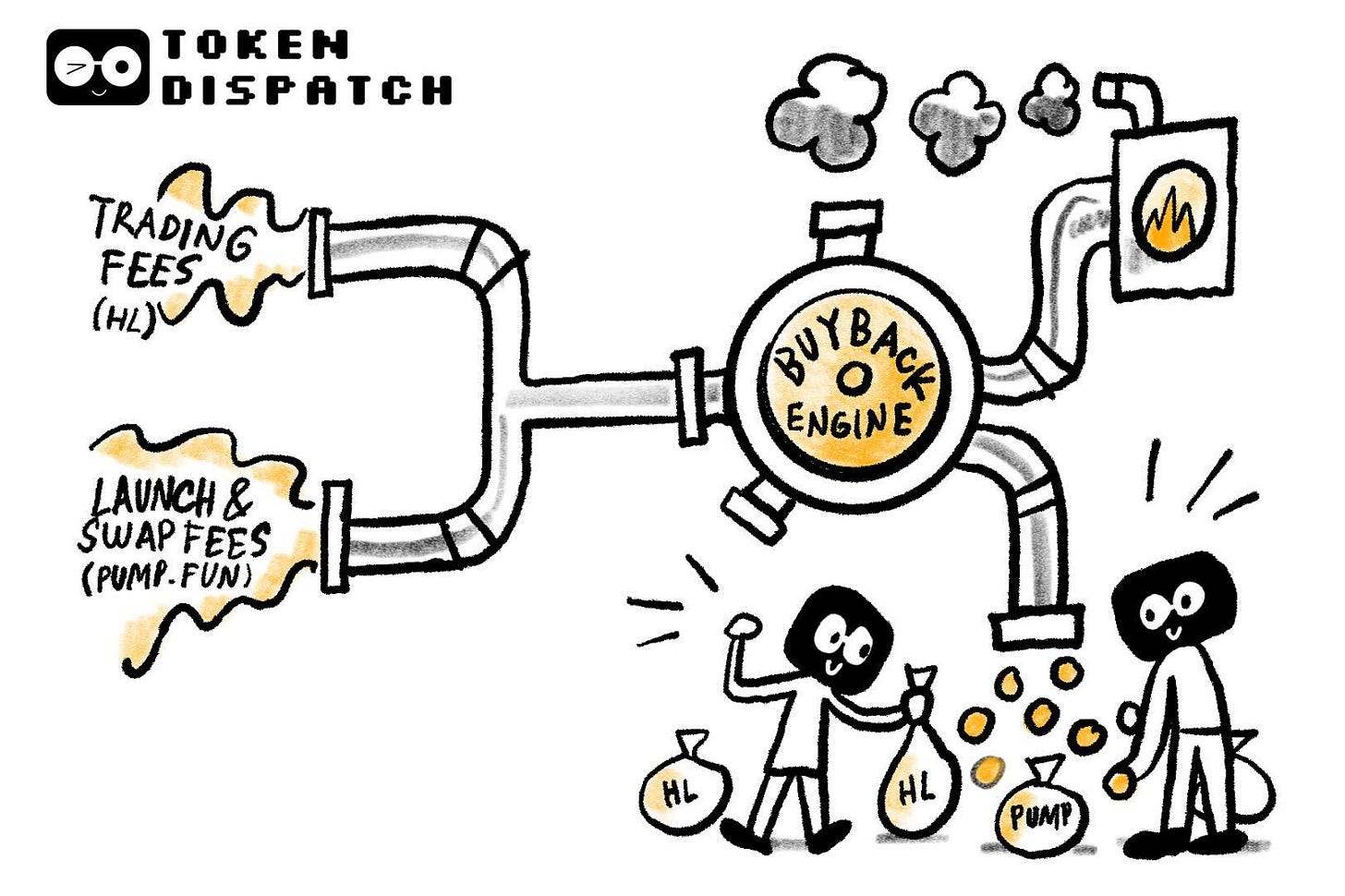
In August of this year, Hyperliquid achieved a historic high of $106 million in fee income, with over 90% used to repurchase HYPE tokens on the open market. Meanwhile, Pump.fun briefly surpassed Hyperliquid in revenue on a single day in September, reaching $3.38 million. The destination for this income was singular—entirely used to buy back PUMP tokens. In fact, this buyback behavior has been ongoing for two months.
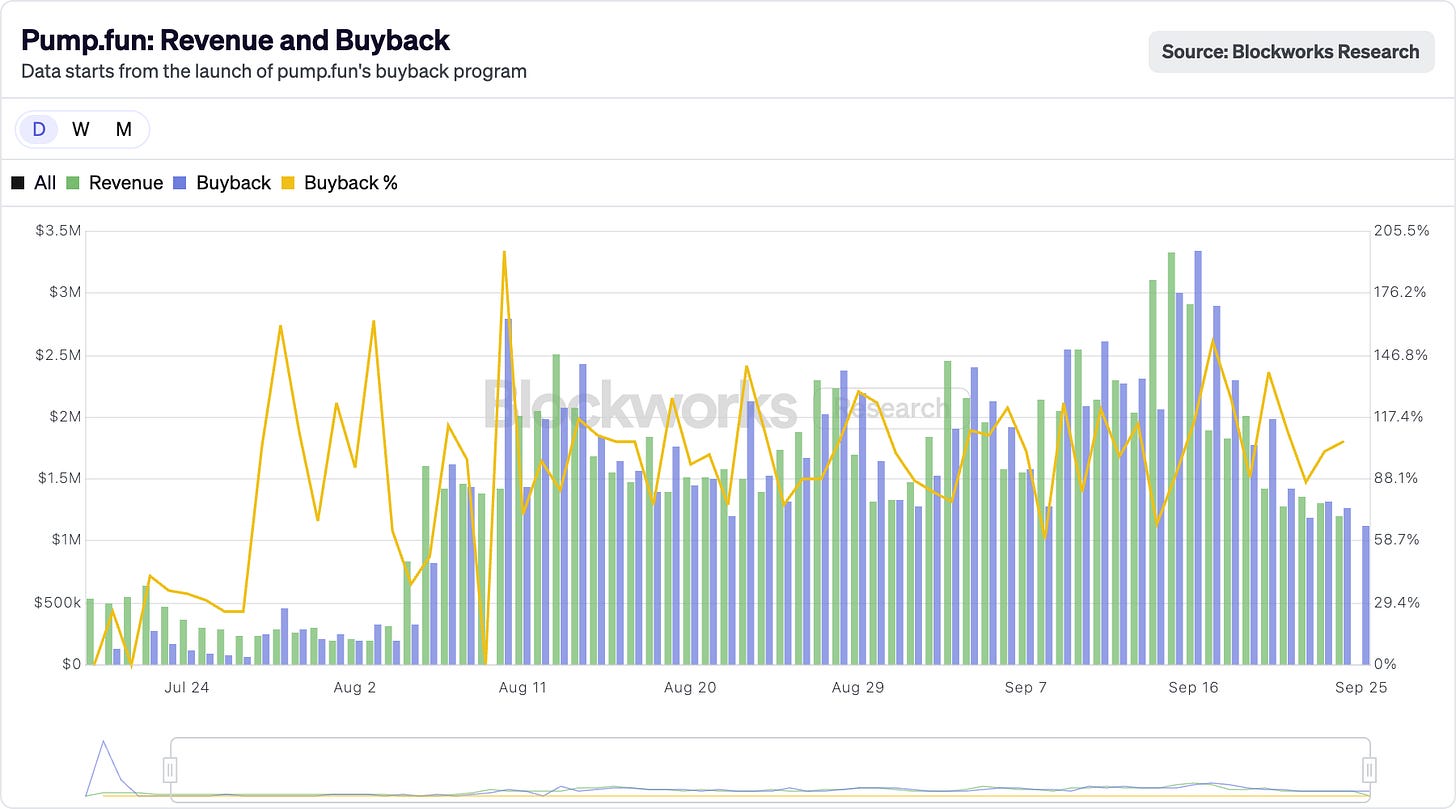
This behavior allows tokens to operate similarly to shareholder proxies. In the crypto industry, this is a rare phenomenon, as tokens are typically sold off to investors whenever possible.
This strategy attempts to replicate the long-standing success of Wall Street's "dividend aristocrats"—such as Apple, Procter & Gamble, and Coca-Cola—who reward shareholders with substantial amounts through stable cash dividends or stock buybacks. For example, Apple spent $104 billion on stock buybacks in 2024, accounting for about 3% to 4% of its market value at the time. In contrast, Hyperliquid's buybacks offset 9% of its token supply.
Even by equity standards, these numbers seem extraordinarily exaggerated. In the crypto industry, this is unprecedented.
Hyperliquid's strategy is simple and direct.
It has built a decentralized exchange focused on perpetual contracts, offering a user experience comparable to centralized exchanges (like Binance) but operating entirely on-chain. With zero fees, high leverage, and a Layer 1 ecosystem centered around perpetual contracts, the platform's monthly trading volume exceeded $400 billion by mid-2025, capturing about 70% of the decentralized finance (DeFi) perpetual market.
What sets Hyperliquid apart is how it uses its revenue.
Every day, Hyperliquid allocates over 90% of its revenue to an account called the "Assistance Fund," which is directly used to purchase HYPE tokens on the open market.
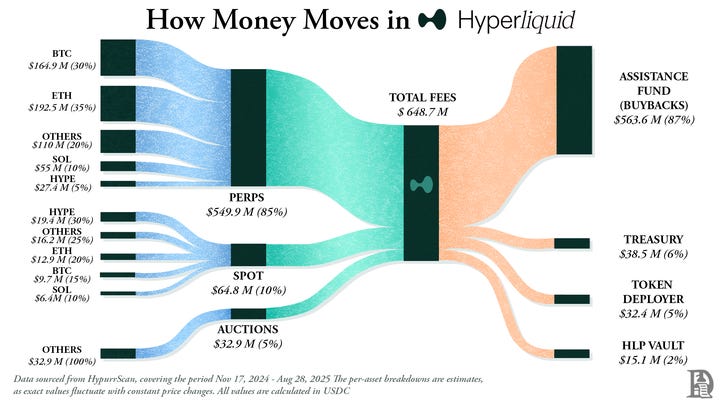
As of the writing of this article, the fund has repurchased over 31.61 million HYPE tokens, valued at approximately $1.4 billion. This figure has grown tenfold from 3 million tokens in January of this year.
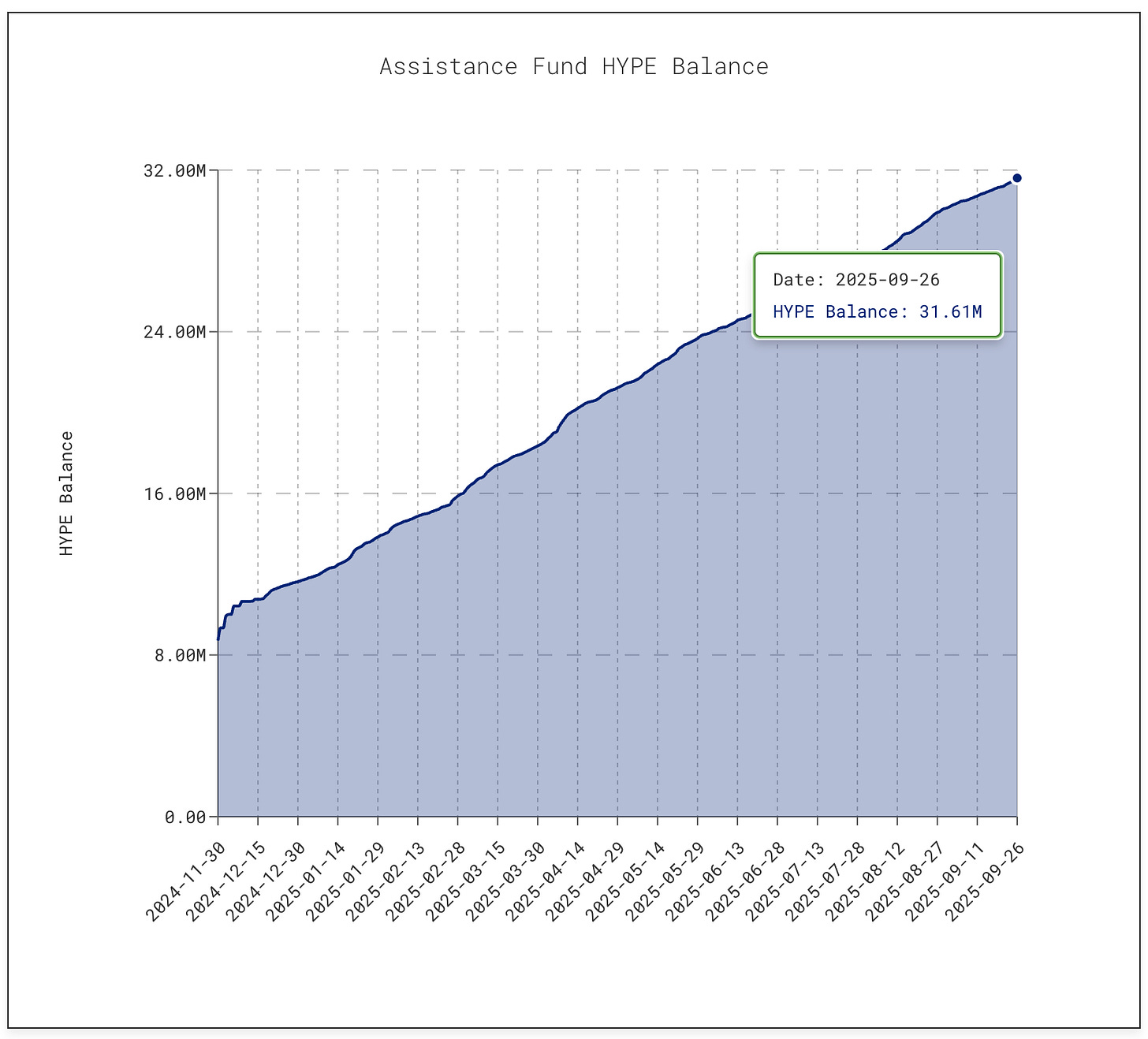
This buyback frenzy has absorbed about 9% of the circulating supply, driving the price of HYPE tokens to a peak of $60 each in mid-September.
Meanwhile, Pump.fun has reduced its token supply by about 7.5% through buybacks.
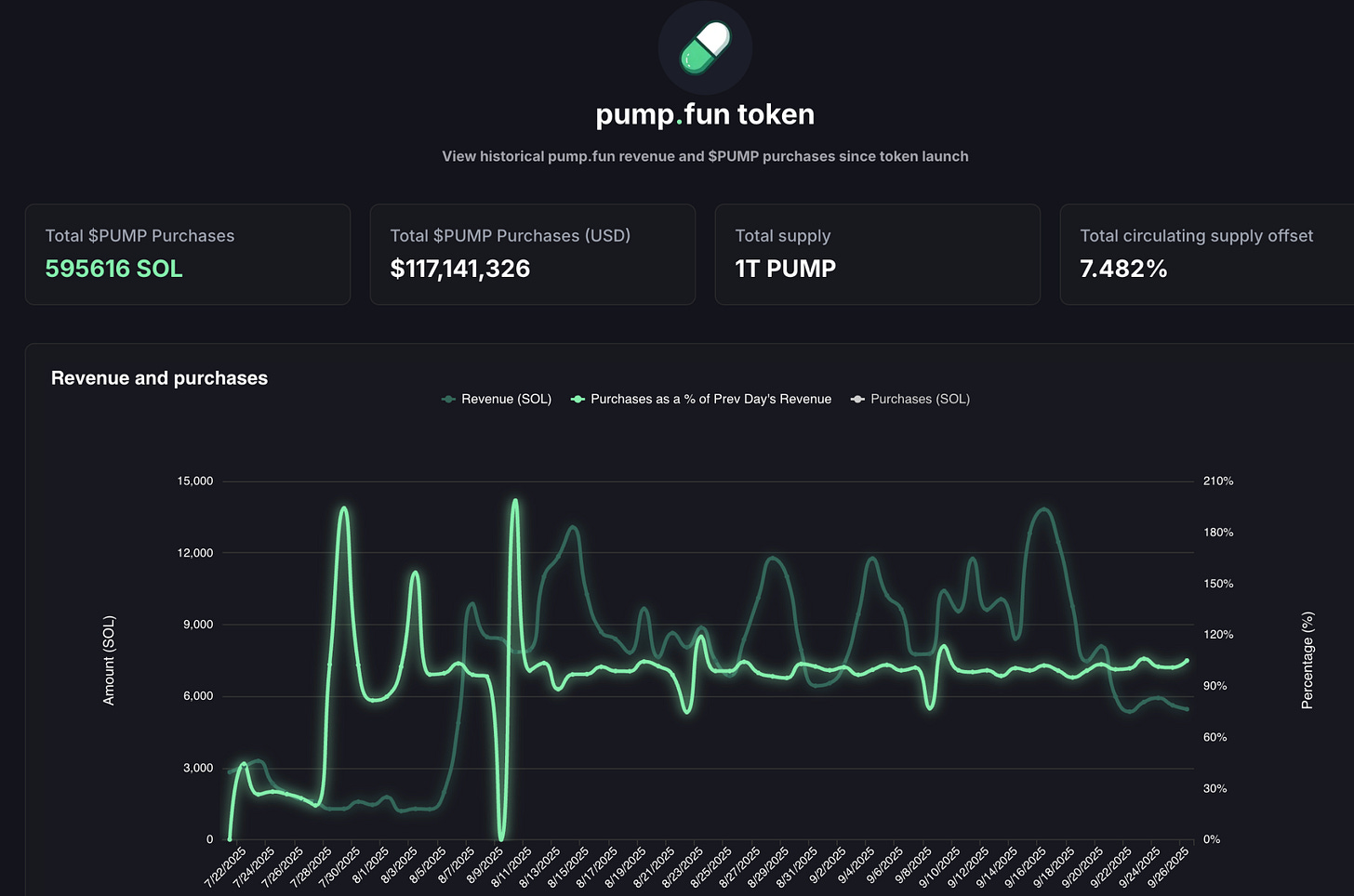
The platform has transformed the memecoin craze into a revenue-generating business model. Anyone can issue tokens on the platform, set bonding curves, and let the market speculate freely. What was initially seen as a joke tool has now become a factory for speculative assets.
However, there is instability involved.
Pump.fun's revenue is closely tied to the popularity of memecoin issuance, leading to cyclical fluctuations. In July of this year, its revenue dropped to $17.11 million, the lowest level since April 2024. Consequently, buybacks also decreased. However, by August, its monthly revenue surged back to over $41.05 million.
Despite this, questions about sustainability remain. When the memecoin craze cools down (which has already begun and will happen again in the future), the intensity of token destruction will also weaken. Additionally, Pump.fun faces a $5.5 billion lawsuit, accusing its entire operational model of resembling unlicensed gambling.
The core driving force supporting Hyperliquid and Pump.fun is their willingness to return profits to the community.
In some years, Apple returns nearly 90% of its profits to shareholders through buybacks and dividends, but these are usually phased decisions announced in batches. In contrast, Hyperliquid and Pump.fun return nearly 100% of their revenue to token holders almost daily.
Of course, the two are not entirely the same. Dividends are tangible cash, which, although taxable, are relatively reliable; buybacks, at best, support the price, and if revenue declines or unlock volumes are too large, the effectiveness of buybacks will be significantly reduced. Hyperliquid faces impending token unlock pressure, while Pump.fun worries about the loss of its memecoin user base. Compared to Johnson & Johnson's steady dividend growth over 63 years or Apple's continuous buybacks, these crypto projects resemble a high-wire act.
But perhaps that’s okay.
The crypto industry is still in its growth phase, with a long way to go before achieving stability. It has currently found "speed." Buybacks possess elements that drive speed: flexibility, efficient tax avoidance, and a deflationary effect. This strategy perfectly aligns with a market driven by speculation. So far, this approach has transformed two distinctly different projects into top revenue machines.
We do not yet know whether this model can remain sustainable in the long term. But it is certain that this method has made the performance of crypto tokens resemble that of company shares that can return value at a speed comparable to Apple, rather than casino chips.
There is a larger revelation here. Apple understood long before the crypto industry that it was not just selling iPhones but also "selling" its stock. From 2012 to the present, Apple has spent nearly $1 trillion on buybacks, an amount exceeding the GDP of most countries, and has reduced its circulating shares by over 40%.
Although Apple's market value still exceeds $3.8 trillion, part of the reason is that Apple views its equity as a product that needs to be marketed, carefully crafted, and kept scarce. Apple does not need to raise funds by issuing more shares because its balance sheet is already strong enough. In this model, stock becomes a product, and shareholders become customers.
A similar model is expanding into the crypto space.
Hyperliquid and Pump.fun are successfully mastering this technique by converting business revenue into buying pressure for their own equity, rather than investing funds back into the business or hoarding them.
This also changes investors' perceptions of assets.
The sales of iPhones are certainly important, but investors who are bullish on Apple know that its stock has another driving force: scarcity. Similarly, for HYPE and PUMP, traders are beginning to view these tokens in a similar light. They see an asset backed by a promise—over 95% of every token expenditure or transaction is likely to be converted into buybacks and destruction in the market.
Apple has also demonstrated another side of this strategy.
The intensity of buybacks depends on the cash flow behind them. What happens if revenue declines? If sales of iPhones and MacBooks slow down, Apple's historical balance sheet allows it to issue debt to fulfill buyback arrangements. However, Hyperliquid and Pump.fun do not have this flexibility. If trading volume dries up, buybacks will cease as well. Unlike Apple, they cannot turn to dividends, services, or new products, as these protocols have yet to find their backup plans.
For the crypto industry, this also brings the risk of dilution.
Apple does not have to worry about 200 million new shares flooding the market overnight. In contrast, Hyperliquid must face this issue. Starting in November of this year, approximately $12 billion worth of HYPE tokens will begin to unlock for insiders, a figure that far exceeds the daily buyback scale.
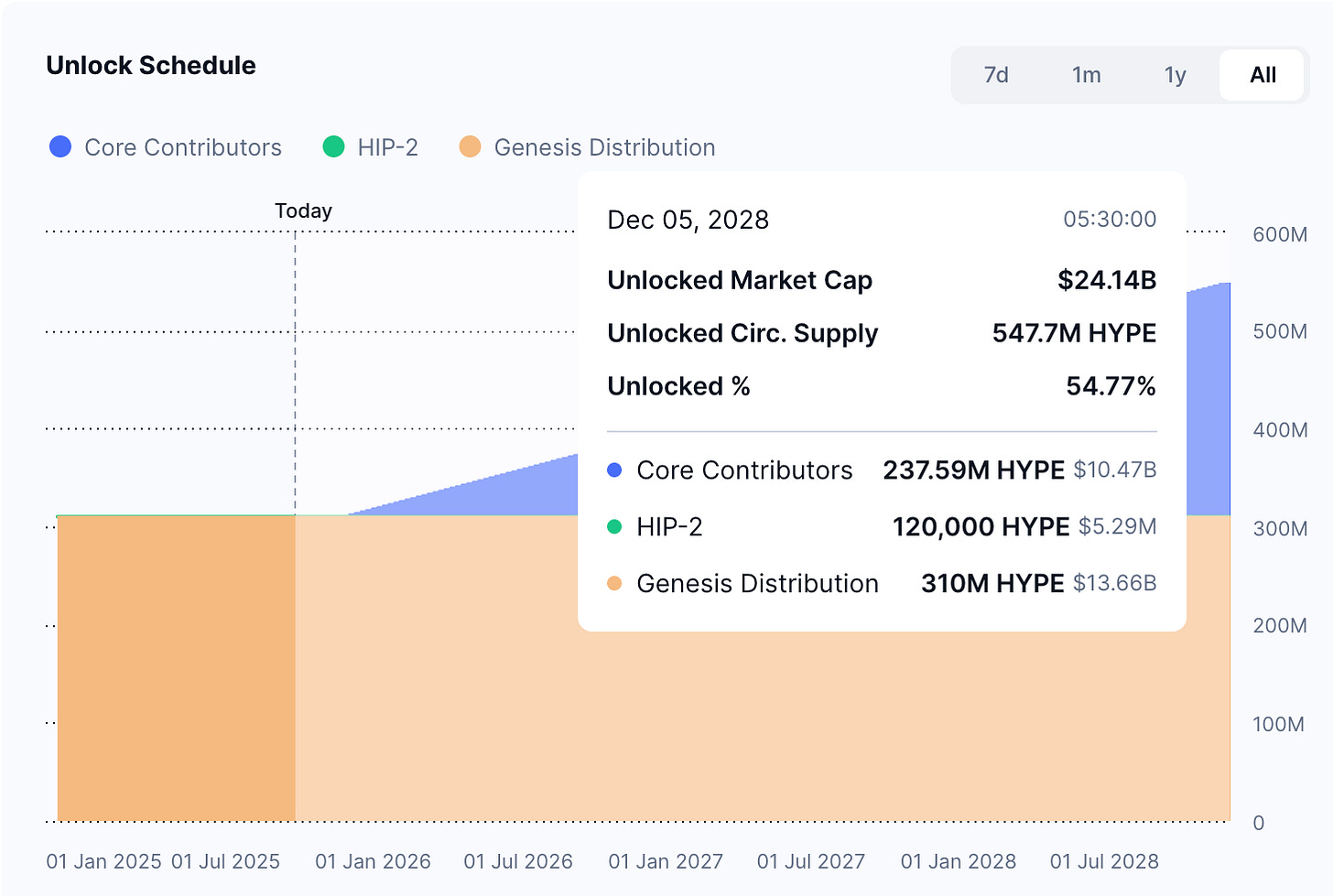
Apple can control its circulating shares, while crypto protocols must deal with unlocking plans established years ago.
Nevertheless, investors still see the story and want to participate. Apple's buyback strategy is evident, especially to those familiar with its decades-long development. By transforming equity into financial products, Apple has successfully cultivated shareholder loyalty. Hyperliquid and Pump.fun are attempting to carve out a new path for the crypto industry, albeit with faster speeds, greater momentum, and higher risks.
免责声明:本文章仅代表作者个人观点,不代表本平台的立场和观点。本文章仅供信息分享,不构成对任何人的任何投资建议。用户与作者之间的任何争议,与本平台无关。如网页中刊载的文章或图片涉及侵权,请提供相关的权利证明和身份证明发送邮件到support@aicoin.com,本平台相关工作人员将会进行核查。




